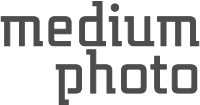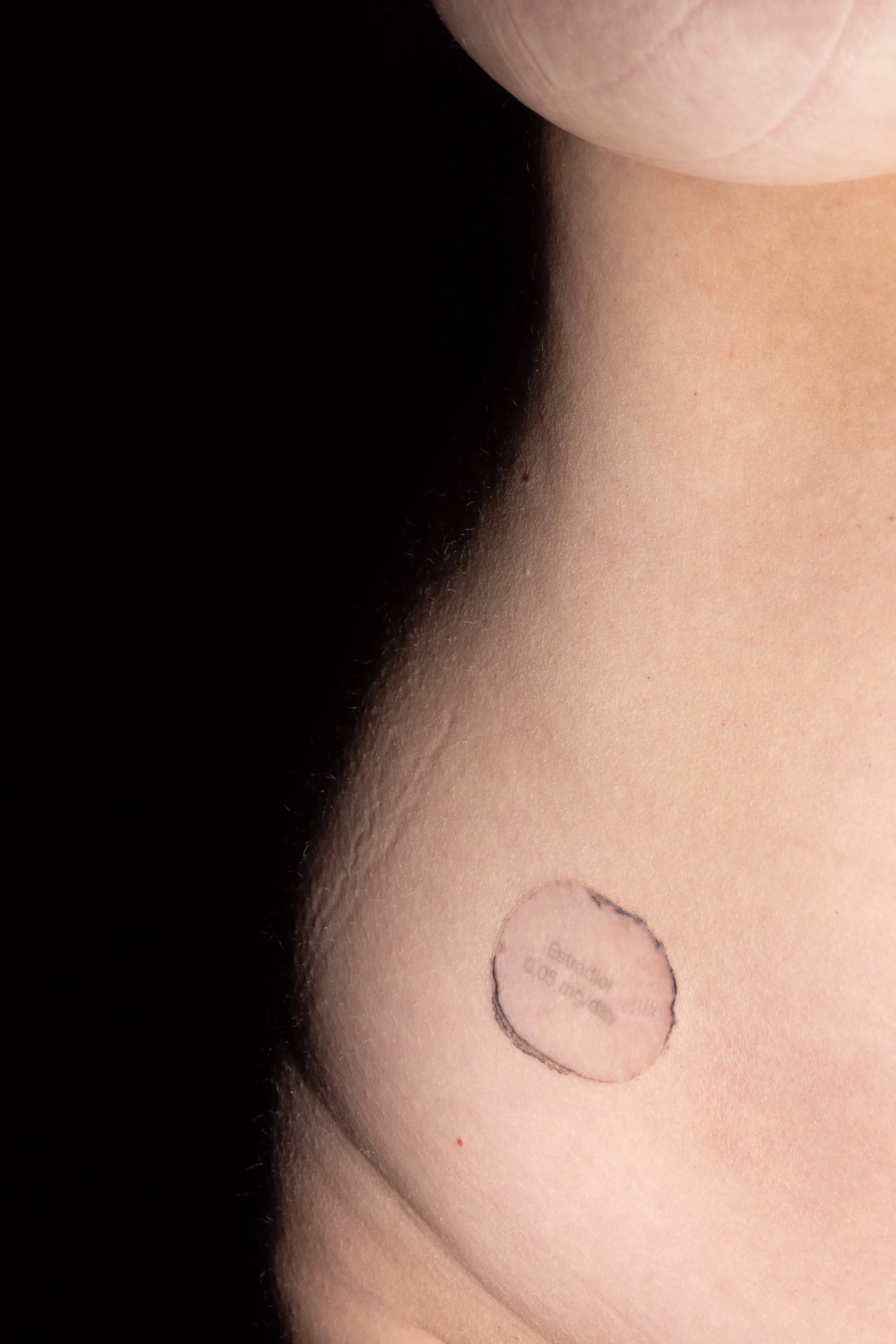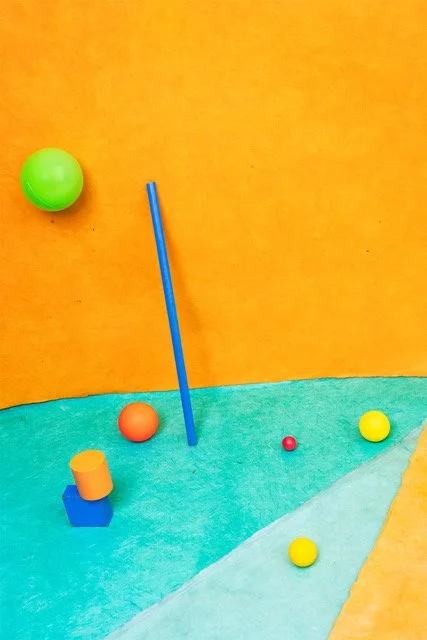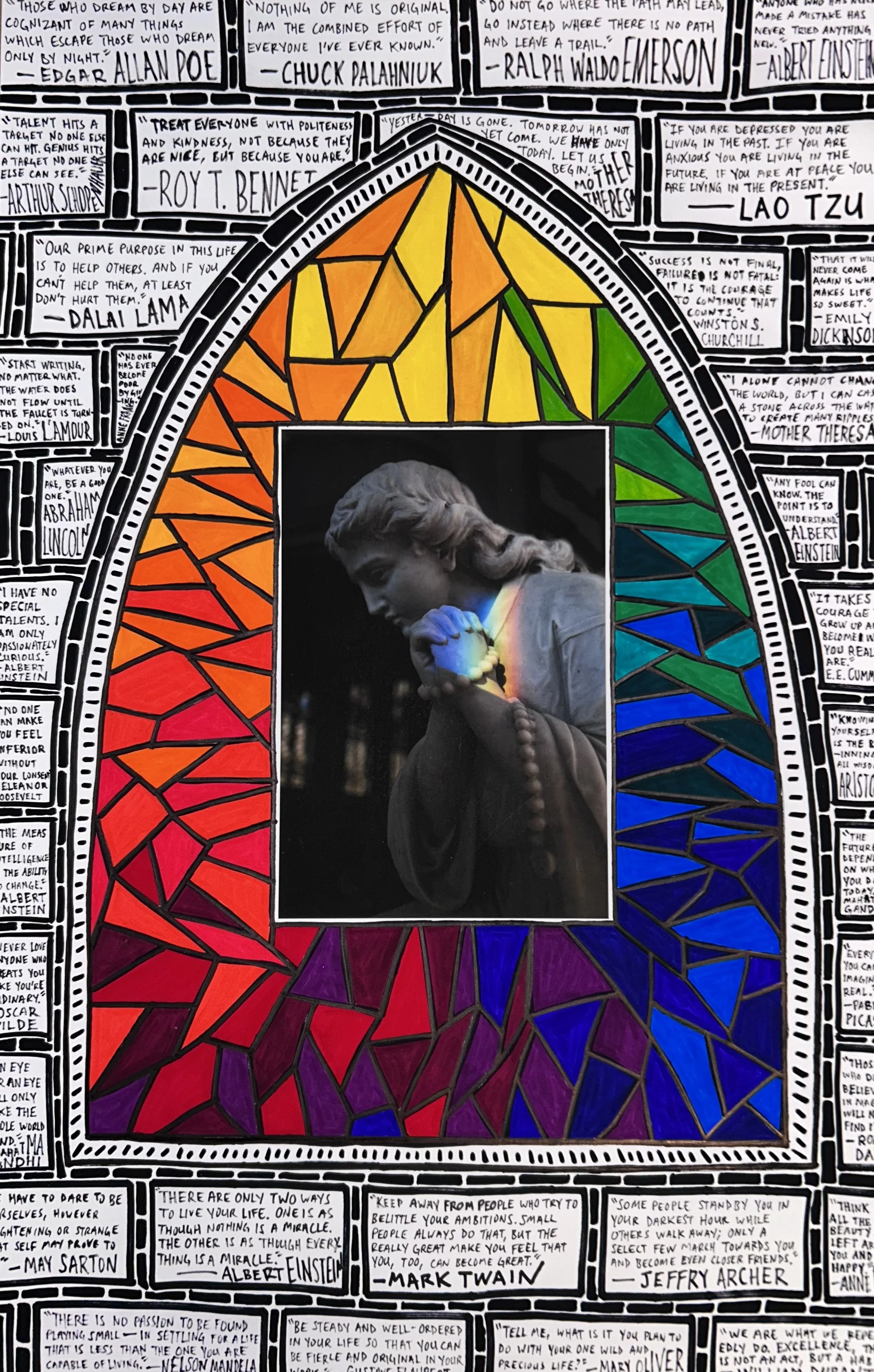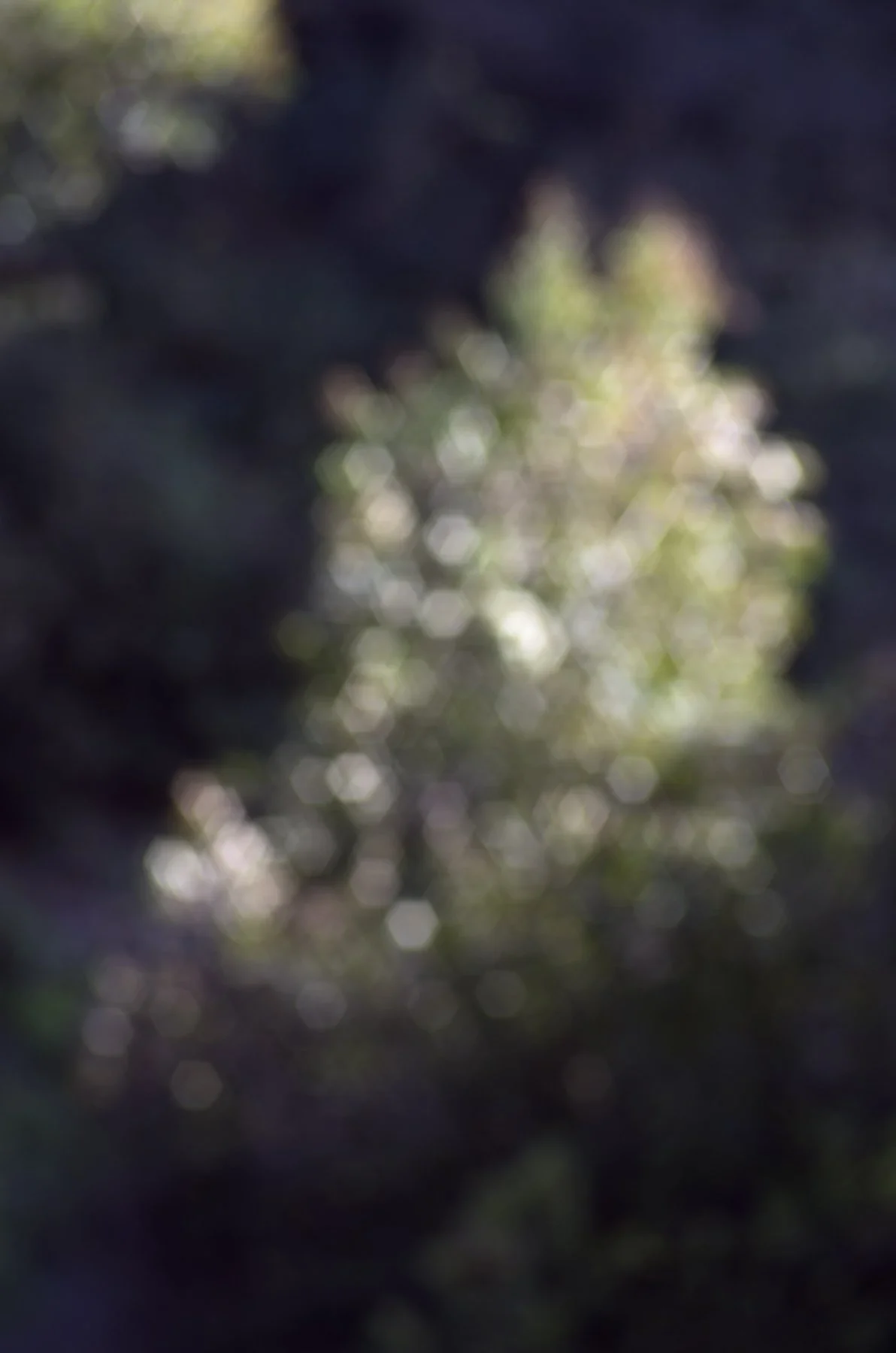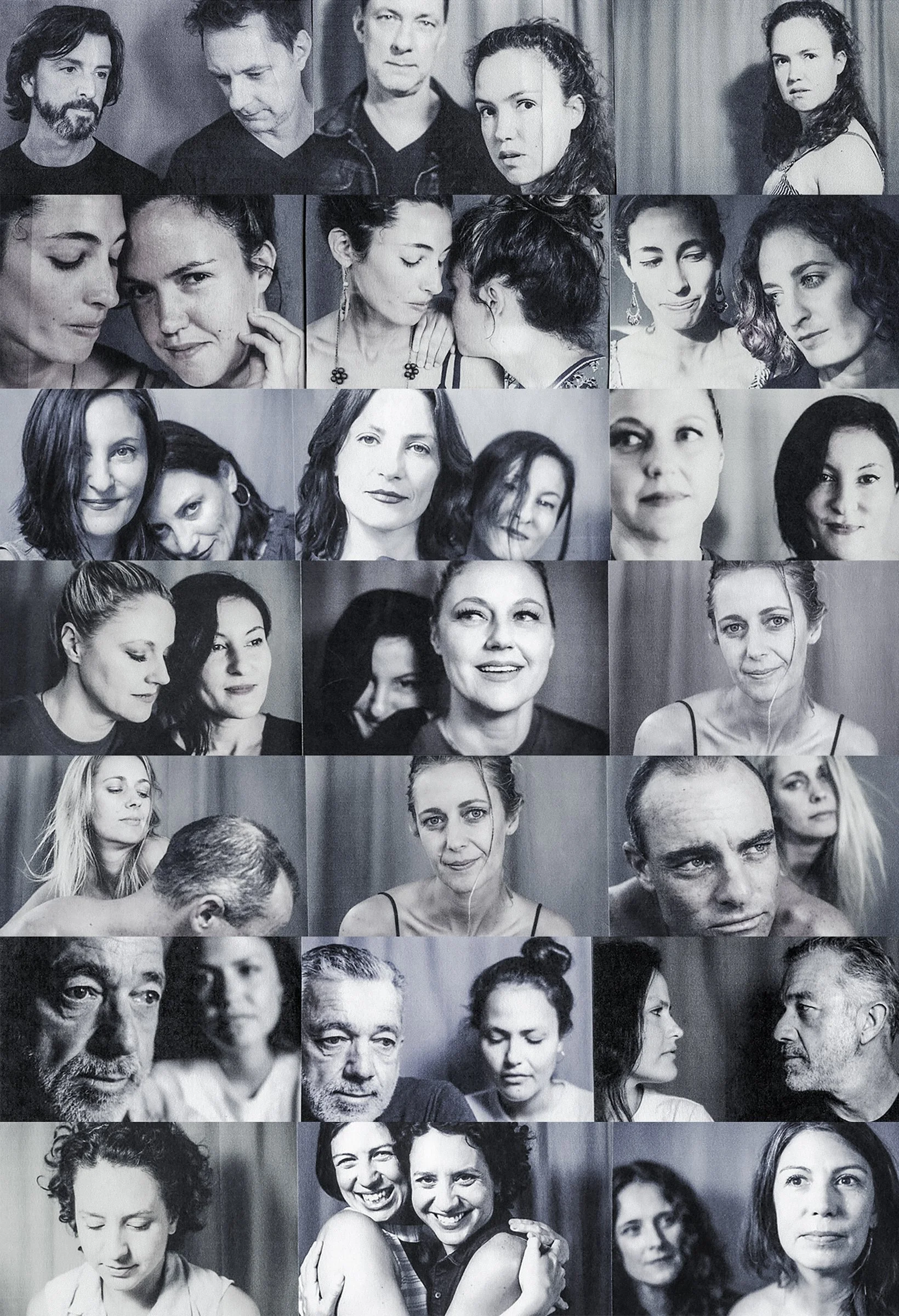Medium Photo Collective Exhibition 2025
A group photography show featuring the members of Medium Photo Collective.
Featured artists:
Amanda Dahlgren | This is 50 (+)
The year I turned 50 was bookended by two significant, contrasting events. It started with an ambulance ride and overnight stay in the ER after passing out and having a massive anxiety attack. And ended with finally landing the dream job I had been working towards for 15 years. My 50s so far have been full of contradictions.
My hair is gray but it’s never looked better. I’m more physically active than any time in my life, playing pickleball and doing pilates. I’m a bass-player, who goes to the chiropractor regularly for neck and back issues. I’m tech savvy, even though I don’t understand the difference between a reel, post, and story. Alcohol, a vice that used to make me feel like the life of the party, just brings panic attacks. My metabolism suddenly sucks, but my doctor says I’m quite healthy thanks to pharmaceuticals and supplements. And I’m starting to fear that my tattoo and face piercings look less badass and more try-hard.
I’m lucky to be alive and thriving. Feeling accomplished. And creative. And capable. And? Just fucking old.
Galina Semenova | In Her Light
In the shadow of doubt, where vulnerability collides with altered self-image, many women experience a disconnection from their own sense of beauty, femininity, and the ability to feel truly seen. Portraits of Resilience emerges from this space—not merely as a photography project, but as a movement dedicated to embracing every chapter of a woman’s life with self-love and acceptance. At its core, it seeks to document the testimonies of breast cancer survivors, illuminating the thriving spirit of survivorship. Juxtaposing the timeless elegance of classical portraiture with the raw realities of scars, tears, and hair loss, the series challenges conventional ideals of beauty while revealing resilience in its truest form. In a world where too many of these stories remain unspoken, the portraits become both a beacon of courage and a testament to lives richly lived despite adversity. Each image is an invitation to witness vulnerability as strength and beauty as truth.
J Grant Brittain | Alt Printing
Little did J Grant Brittain know that when he picked up a borrowed camera while working at the Del Mar Skateboard Ranch in 1979 that special opportunities would arise in the coming years and that 46 years later he would still be shooting skateboarders and whatever else interests him.
Today, Grant is still a photographer and his love for skateboarding continues to be strong. When not shooting skateboarding Editorial and Commercial projects, Grant is shooting Abstracts, Portraits, Landscapes and Street subjects. Other projects include teaching, leading workshops, curating his photo exhibits and selling his classic skate and fine art images.
Grant is a lifelong North County local and lives in Encinitas, California.
Alt Printing
These prints are a few examples of the alternative printing methods I have been doing, Salt, Kallitype, and Platinum/Palladium printing.
Kris Hodson Moore | Tiny Red Ball
There may be an arc somewhere that bends toward justice, but it’s moving too slow. So, I do what I can. I pick up trash on the beach and feel a rush of self-righteous glory until I notice that I am mostly attracted to colorful trash. This is disrespectful to ugly trash and may qualify as negative justice.
But the beach is cleaner, so I congratulate myself for picking up other people’s trash while secretly judging them for leaving it behind in the first place. Without thinking too much about whether stern judgment cancels a good deed, I take the pretty trash home to wash and photograph.
Beyond cleaning the beach, the purpose of this exercise is vague. But I love bold colors and a strong formal structure. With a theatre background to inform me, it’s a natural evolution from well-placed balls and straws to actors on a stage.
Blue straw dominates. Orange and blue restore balance. Tiny red ball commands attention. It’s a step removed from casting sticks in the sand to find meaning. We are and always have been meaning-making machines.
Kris Hodson Moore was born in 1951 in South Bend, Indiana. She is still alive after having lived in Indiana, Missouri, Wisconsin, New York, New Mexico, Virginia and now California, where she lives with a loving husband and three self-centered cats.
Kaleah Lanae King
This exhibition presents photographs from an ongoing series documenting female race car drivers in a historically male-dominated sport. The images were made over several years at Willow Springs and Chuckwalla racetracks, capturing both the intensity of the races and the stark beauty of the desert landscape that surrounds them.
At the heart of these images is Bella, the lone woman among her relay team and, on some days, the only female driver on the track. Photographed from below in a stance coded as masculine, and framed against her male teammates, she becomes both participant and symbol—highlighting the entrenched gender dynamics that persist in the world of motorsports.
Several images in the series utilize long exposure techniques, creating a dreamlike quality that contrasts with the raw speed and aggression of racing. This series is not only about the sport, but about what it means to claim space and move against expectation. Together, the photographs explore themes of visibility, power, and belonging, and speak to the broader struggle for equity in spaces shaped by exclusion.
Liliana Hueso | Haircuts
This photo project explores the challenges marimachas (butches) face in accessing inclusive beauty spaces. While barbershops typically offer rigid “men’s cuts,” beauty salons often lack the tools or cultural understanding to meet our needs. The idea emerged while documenting portraits of butches and masculine-presenting women in Mexico. In conversation, a recurring frustration surfaced: haircuts. For many, this is not just about aesthetics—it’s tied to identity and visibility.
In response, I reimagined traditional salon signage, creating a portrait series that features marimacha women modeling a range of haircuts. These images challenge gendered beauty norms while celebrating the diversity and resilience within marimacha identity.
My work often begins with listening. These sessions evolved into a deeper exploration of how gender-nonconforming people navigate beauty spaces not built for us. This series is both a call for inclusion and a tribute to the creativity and strength of our community.
Marshall Williams | Remnants Of Time
I’m drawn to the man built landscape. The expressive nature of a structure and its surrounding environment reveal much about ourselves and the human spirit. At the time a building is constructed, it reflects a forward looking ideal. After the passage of time, that same piece of architecture evolves into a reminder of yesterday’s values. Long after these structures have served their time, it will be the photographs that become the keepers of the details and the evidence of their existence and of ours.
“The commonplace aspects of the world could teach us a great deal not only about American history and society but also about ourselves. It is a matter of learning to see” — JB Jackson
Patricia Grabski | It’s A Sign
Signs are everywhere—on street corners, highways, and even in the most unexpected places. For many, they fade into the background of daily life, overlooked and unappreciated. As a photographer and retired city planner, I see them differently. They are storytellers. They speak of places, people, and purpose, revealing narratives beyond directions or advertisements.
My work is a visual journey through signs I have photographed around the world. Each sign marks a moment in my life, whether in the neighborhoods of my childhood or the streets of foreign countries, and places I dreamed about as a kid, like the wild expanse of Alaska and the dynamic metropolises of London, Rome, and Tokyo. These signs are a piece of my geography; they also reflect something bigger. They show how communities express themselves, what they value, and how they want to be seen by the world.
The signs are part travelogue, part mediation, and part love letter to the subtle messages our world offers, if we only stop to notice.
richard richard richards | American Bullshit and the Glimmer of Hope
I like to find my images out in the real world. Photography at its purest. Simultaneously the most freeing and the most challenging. To be able to find a photo that can make someone feel, or think, or see the world differently from a single slice of reality is truly a wonderous thing. The process is less about the technical and more about being present and open to what the universe is offering. And when the time is just right, and the planets align and you fit something truly remarkable into a single frame, well... it's just the best.
The refraction photo was one of these photos for me. Taken during a time of both personal and national upheaval. It was a needed beacon of hope during a time in the United States dominated by political turmoil and a worldwide pandemic. To find a literal symbol of peace, acceptance, and harmony between an oppressed people and their oppressor. It was a miracle.
I made a large print of the photo and pinned to the magnetic pinboard above my workstation. Also living on the pinboard was a stack of my favorite inspirational quotes from my 2020 tearaway cat calendar. Instinctively I started to frame this photo with these sheets featuring the wisdom from some of the greatest minds in recorded history.
This installation is a celebration of that union and a symbol of hope surrounded by that which tries to kill it, one of the most “American” things of all… violence.
Riley Arthur | Forgotten Sweethearts
I grew up in American Samoa, on a rainforest island where constant humidity dissolved photographs. Watching my family photos decay instilled a love of family albums. After my elderly neighbor died last year, his family albums were tossed in the trash. I rescued them, and Forgotten Sweethearts was born.
The project explores memory, erasure, and identity through discarded photographs, blending real and imagined narratives of family and cultural history. In a digital age, this work honors physical traces that remain. Vintage lockets hold “forgotten sweethearts,” miniature archives of unknown lives, some intact, others reimagined by cutting locket-sized holes from found images. Using photo archaeology, I reclaim orphaned photos and strangers from my own family archive. Images once deeply personal appear as anonymous time capsules. Given my history, I can’t fathom discarding family photos. Through this work, I give these faces new life and meaning, lost but no longer forgotten.
Stefan Frutiger | Re:Emerging Glen Canyon
The place everyone knew as Lake Powell
Growing up in the Swiss Alps where abundant water flows freely, I now document the American Southwest's severe water crisis through film photography and traditional darkroom printing. My black and white images of Glen Canyon, better known as Lake Powell, reveal a reservoir at 30% capacity — down from 95% in the early 2000s — serving as stark evidence of a megadrought and changing climate.
Contemplative prints expose profound injustices in water allocation: while Lake Powell's waters recede, revealing ghostly bathtub rings on canyon walls, three quarters of Colorado River water flows to agriculture. Much of that water is used for growing water-intensive forage crops for local cattle ranches and international export. Meanwhile, Native American tribes holding rights to one quarter remain unable to access what is rightfully theirs.
Each photograph confronts the viewer with uncomfortable truths about the 1922 Colorado River Compact that over-allocated the river based on unusually wet years. The monochromatic palette strips away distraction, focusing attention on essential elements: receding waterlines and exposed bedrock. Water is diverted to distant cities while local communities go without. These images serve as documentary evidence for the Colorado River crisis.
Traverse Day Robinette | Trochilid Canyon
Noise pollution is prevalent throughout San Diego, making it nearly impossible to find quiet, natural spaces. I’ve been experiencing a sense of loss—both within myself and in my connection to the natural world. “Trochilid Canyon” is about discovering a quiet space in an unexpected place. Rather than being immersed in nature, I remain an observer, looking in from a distance. In this canyon, I escape my everyday life within the tapestry of soft shapes and negative spaces woven by the plants.
Wolfgang Hastert | #algorithm
In the series #algorithm, Wolfgang has switched from cyberspace to his own studio, inviting subjects through a unique relationship algorithm. This community-based project employs chance collaborations to create chains of double portraiture. Each participant selects a new guest, unknown to Wolfgang, based on meaningful criteria: someone they believe deserves better treatment, a person they know a secret about, someone whose culture they find difficult to understand, or someone they secretly admire. Wolfgang presents a large-scale collage made up of these relational portrait experiments, celebrating the beauty of authentic connections.
